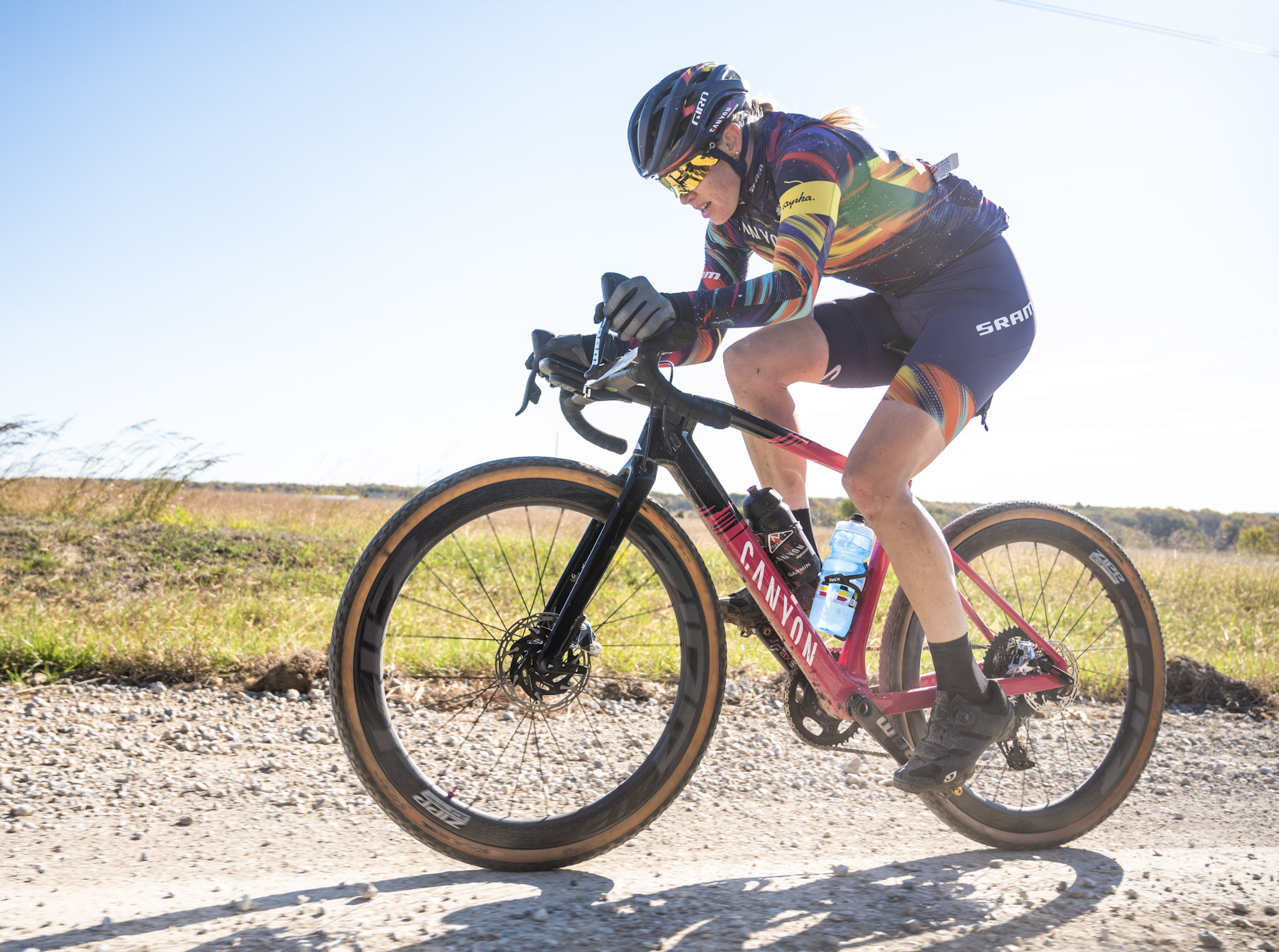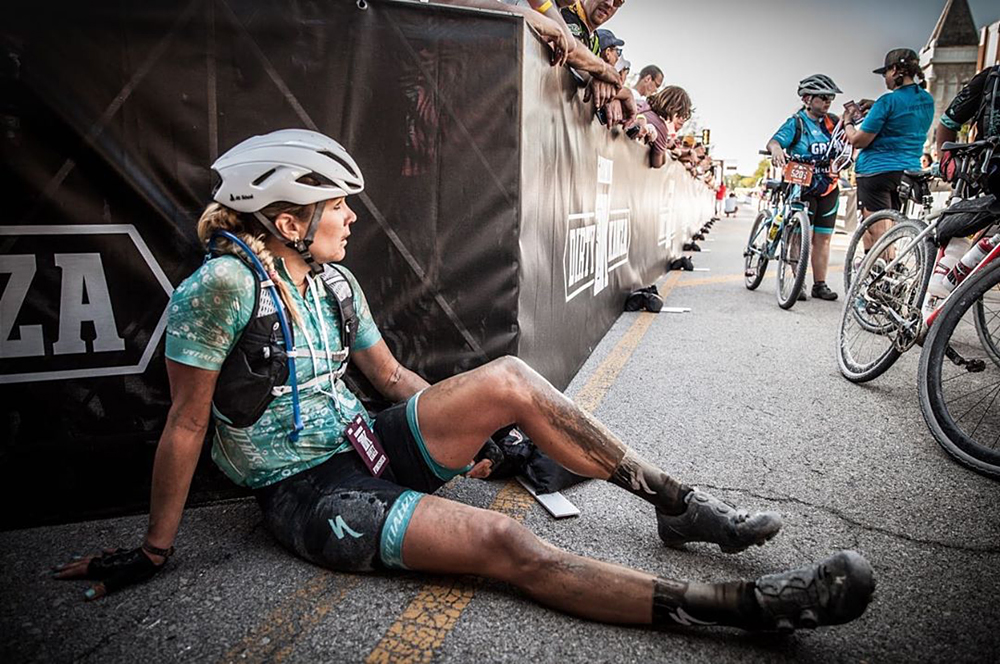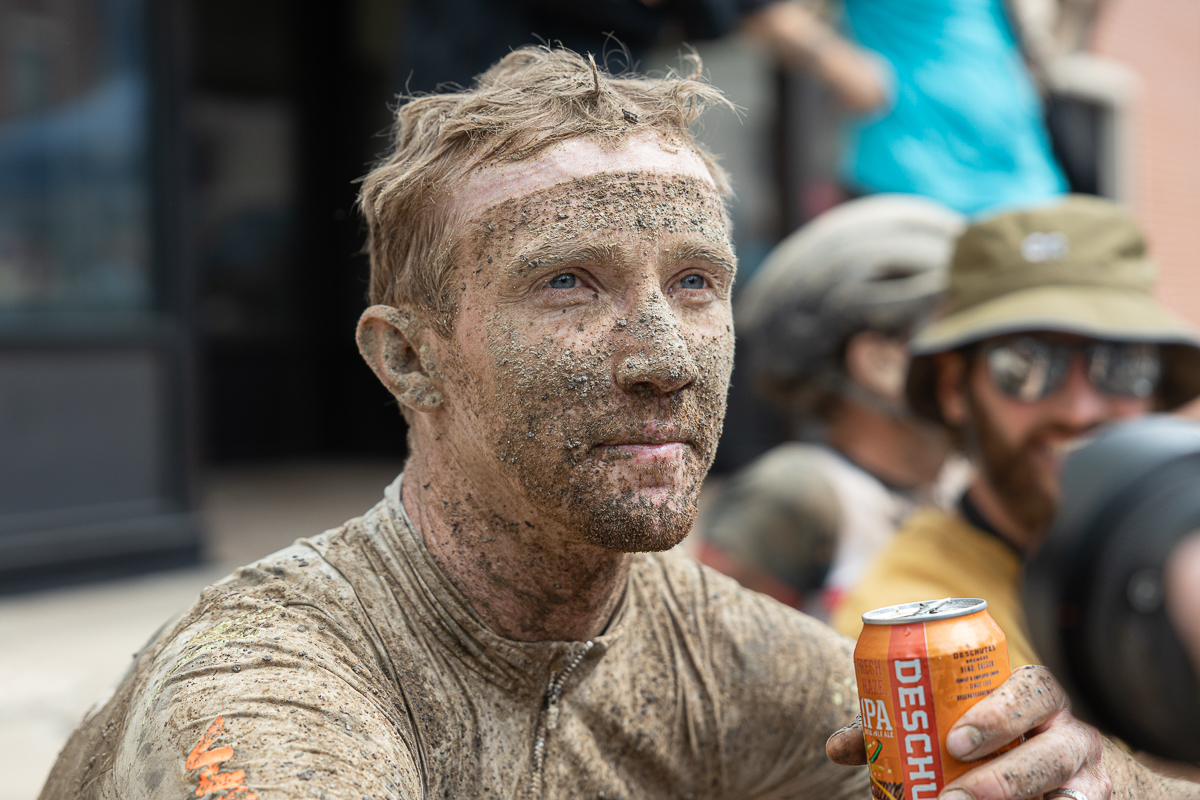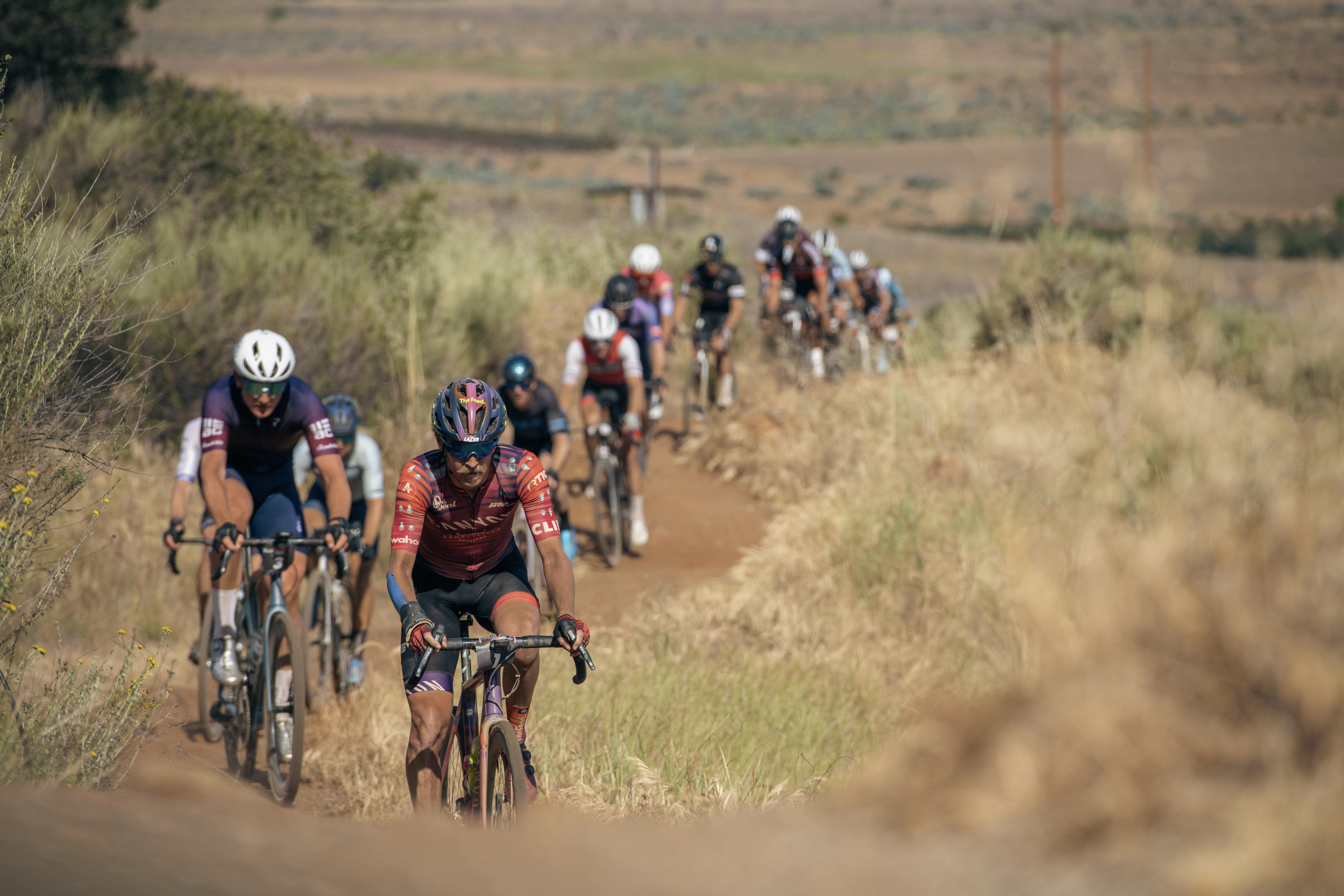Why has gravel racing become so popular?
Tiffany Cromwell, Ian Boswell, and Alison Tetrick discuss how gravel delivers freedom, opportunity, and adventure

Gravel racing has exploded in popularity. From a niche pursuit to one every cyclists is aware of, this supremely accessible yet physically demanding off-road discipline is everywhere. While gravel racing maintains a grass-roots feel far removed from the world of the professional peloton, it still has its stars.
To get a handle on gravel's unique appeal, we spoke to three of them: Tiffany Cromwell, who mixes gravel with racing the women's road calendar for Canyon-SRAM; Ian Boswell, a former Team Sky pro and winner of Unbound Gravel; and Specialized-sponsored Alison Tetrick, another former roadie and Unbound winner.
"I think the biggest appeal of gravel is to go further and explore the roads less ridden," explains Tetrick. "It's the freedom to discover things away from traffic and away from people".
While the backwoods and testing terrain might inspire fear in those used to solid surfaces, gravel also appeals to those put off by the possibility of crashing in road races. This is particularly relevant to Boswell, whose switch to gravel was partly influenced by a series of concussions he suffered while racing on the WorldTour circuit.
In 2020, he swapped the life of globe-trotting domestique for teams including Sky and Katusha-Alpecin for a largely self-directed calendar of gravel racing. Now he is something of a free agent.
"I like the self-sufficiency required to be successful in this environment," he explains days after taking a podium spot at Unbound.
"At Team Sky, it was almost like an overload of support. However, as an American, I was used to racing like a privateer, figuring things out independently, getting my own coach, and sorting out bikes. So I've always enjoyed that."
The latest race content, interviews, features, reviews and expert buying guides, direct to your inbox!
Although racing is evolving, team tactics remain largely absent from gravel. So too is the possibility of a team car following behind you with a stock of spare wheels. In fact, besides their talent and fitness, there's very little separating pros like Cromwell, Boswell, or Tetrick from the hundreds of other riders lining up at the races.
"I'm a huge road racing fan, but you're inevitably operating up on a bit of a pedestal," says Tetrick. "I think it's a little less relatable."
"Gravel is more like a marathon or an Ironman. Anyone can compare my time against their time. And ultimately, we both climbed that same hill, or had to go through the mud, or suffered having to change a flat. As a scene, there's a strong desire to connect with people".
Pro-Am
While few of us will ever make it to our debut Tour de France, more than 1,000 riders navigated the ballot system this year to score a place at the 200-mile-long Unbound Gravel, the premier event in the racing calendar. Besides the stunning scenery, the ability to race on a level playing field against the best in the world is a massive part of the attraction.
"There's very much a community feel to gravel events," says Cromwell.
"They're way more relaxed than a road race. It's always a party-like atmosphere, and usually, there's a beer sponsor. Still, it's quite serious once you get on the start line. And the racing can be super hard, particularly at the bigger events. But the difference is you have people that race to win, and you have people there to enjoy the challenge of getting to the finish line. It creates an inclusive atmosphere where other people aren't judgmental, and it's very open and welcoming".

"At Unbound this year, I met this amazing kid from Mississippi," explains Boswell.
"He'd been overweight and found gravel cycling through the internet. We both ended up at the start line together, having arrived via completely different paths. I thought that was so cool. I think pro athletes take equal inspiration from these stories. Then if newer riders take inspiration from the people at the front of the race, it's kind of this complete circle."
If the pros add a touch of stardust to proceedings, gravel events also offer an easier way to get noticed than working your way up through the ranks.
"Compared to the road, you can sign up for Unbound and be on the start line with an opportunity to show yourself and try to make a career out of it," says Boswell.
Cycling for cool kids
Of course, while all this makes for great events, it also makes for excellent marketing. Before being steamrolled by its growing popularity, some cynics claimed gravel was just an enormous marketing exercise. However, gravel has since proven its ability to inspire interest among people, from long-time riders looking for something different to newbies left cold by the sport's traditional formats.
"As a rider, you kind of get put in this box, like oh, you're a road racer," says Boswell.
"There's a certain look and a feel to what a road racer is, you know, you have shaved legs, wear spandex, own some deep dish wheels".

Gravel's more general outdoor aesthetic no doubt helps it appeal beyond those happy to consider shaving their legs a prerequisite to hopping aboard their bike.
"There are fewer people in gravel telling you where to wear your sunglasses or the rules regarding sock height or white shoes," explains Tetrick
Unusually for cycling, gravel has a distinct feeling of being cool. And not just cool by cycling standards, but properly mainstream cool.
This perception of the sport as fun and carefree is in large part thanks to the enthusiasm of its adherents. All the riders we contacted for this feature were keen to share their passion for the sport, or as Tetrick put it, "the gravel fire".
Of course, as sponsored athletes, this is partly what they get paid for. Still, the difference compared to trying to get access to the average WorldTour racer is marked.
In a way, the job of a pro gravel racer is less defined than that of their road-going colleagues. A bit more like being a pro skateboarder, you still need the skills, but a degree of media-savvy and a personality also goes a long way. The lack of a tightly controlled PR operation makes it easier for the media to cover gravel cycling, while its novelty also makes for a fresh angle.
"People racing gravel at the highest level tend to work with brands and partners who have chosen them for their personality, who they are, and the kind of things they want to speak out on," says Boswell.
"You don't really have that opportunity in professional road racing."
Something different
Besides being freer to say what they want, Boswell and Tetrick also differ from most professional road cyclists in having more agency in deciding which races to attend.
This greater freedom stems from the fact that it requires much less money, organisation, and infrastructure to send a single rider to a gravel race than it does to send a squad to compete on the road.
For Cromwell, who still rides on the road at the highest level for Canyon-SRAM, switching to a mixed calendar was a joint decision with her team.

"When I was renegotiating my contract at the end of 2020, our manager proposed the idea," explains Cromwell. "He saw the growth of gravel and that it was an important area for our sponsors. So, we took the idea to Canyon".
Having turned pro in 2010, a second aim was to provide some fresh stimulus.
"Being in the sport for so long, he could see that sometimes I need something different," explains Cromwell.
Currently, the gravel scene is primarily focused in the USA. This is partly because many of its most famous events are located in the States, as are many of the brands most deeply involved. At the same time, gravel doesn't have to compete with the traditional road calendar in the way it does in Europe.
"The US is where the biggest races are," says Cromwell. "So you can see why maybe there's more interest from US teams. Some European-based teams that focus solely on the WorldTour probably don't want riders getting distracted by doing gravel. But it's a hugely growing market. I can see sponsors deciding it's important and teams deciding to send riders."
Tetrick reckons that there are more than a few roadies who now look at the lifestyle of the pro gravel racer with a degree of envy.
"I'd need more than two hands to count how many big pros currently racing road have seen my Instagram and been like, 'Man, it seems like all you do is get paid to go to parties, dress up, meet people, and ride your bike.'"
It's probably no surprise that each of the riders we spoke to talked about how gravel had been instrumental in reigniting their love for cycling. Having been bombarded with marginal gains, performance metrics, and sports nutrition, it's not much of a stretch to think large sections of the cycling community might feel similarly.
Can gravel stay rad?

As gravel becomes more mainstream, there's always the risk of it losing some of its rebellious spirit.
This April, the UCI launched a 12-race Gravel World Series. It's now hard to think that at the elite level, gravel won't become somewhat more professionalised.
"I think more European races having that UCI status will really open up the scene over there," says Tetrick.
Unsurprisingly, this development hasn't been met with unmitigated enthusiasm by everyone in the sport. Instead, some worry that gravel will struggle to remain accessible and inclusive as more pro teams and official bodies start paying attention to it.
"I hope that gravel continues to maintain the same level of approachability," says Boswell.
"Knowing the road cycling world, I feel a certain level of responsibility. I still love road racing, but I think there's space to try something different. Inevitably, gravel is going to become more serious and competitive. But my perspective is that we're giving up a lot of freedom if we fall back into the mode that we already know".
At the same time, there are elements to the gravel format that seem built to resist it ever becoming too mainstream. For one, while most road races are designed partly with TV in mind, the vast distances and attritional racing style of gravel events mean they're far better experienced as a participant than a spectator.
"On-road, there are a whole plethora of tactics that can be played," says Cromwell. "In general, on the gravel, it's just about suffering for a long time and riding as hard as you can to drop the rest of the riders".
How big?

Despite the live coverage of Unbound Gravel this year, plus the success of gravel-adjacent events like Strade Bianche, it's hard to imagine huge numbers of people tuning in to the average gravel race. For this reason, sustained growth in gravel racing is still likely to remain driven from the bottom up.
"I think it's definitely going to grow globally," says Cromwell.
"But will it ever compete with the WorldTour? Probably not. It's a very different demographic that wants to do gravel racing. I always call it a bit of a cowboy sport. It appeals to people who want to be away from the system and enjoy both fun times and hard racing. At the same time, I can see more people creating careers out of it".
That amateurs and pros can feel they have a stake, not just in something amorphous but in particular events and a broad community, is unusual and worth preserving.
For her part, having won Unbound Gravel in 2017, this year Tetrick spent the race chaperoning riders for whom simply finishing the 200-mile course would be a considerable achievement.
"They were all so nice," says Tetrick. "It was great having them trust me to get them to the finish. All the way, we were talking and making jokes. For me, that's the spirit of gravel - or just the spirit of biking. I know most people would say cycling, but I like to say biking because it makes people mad. Either way, I think it's alive and well".